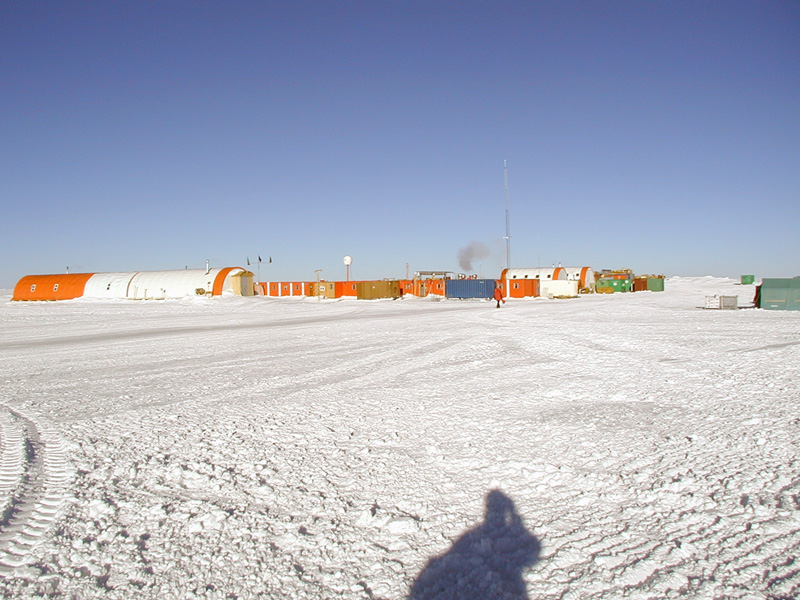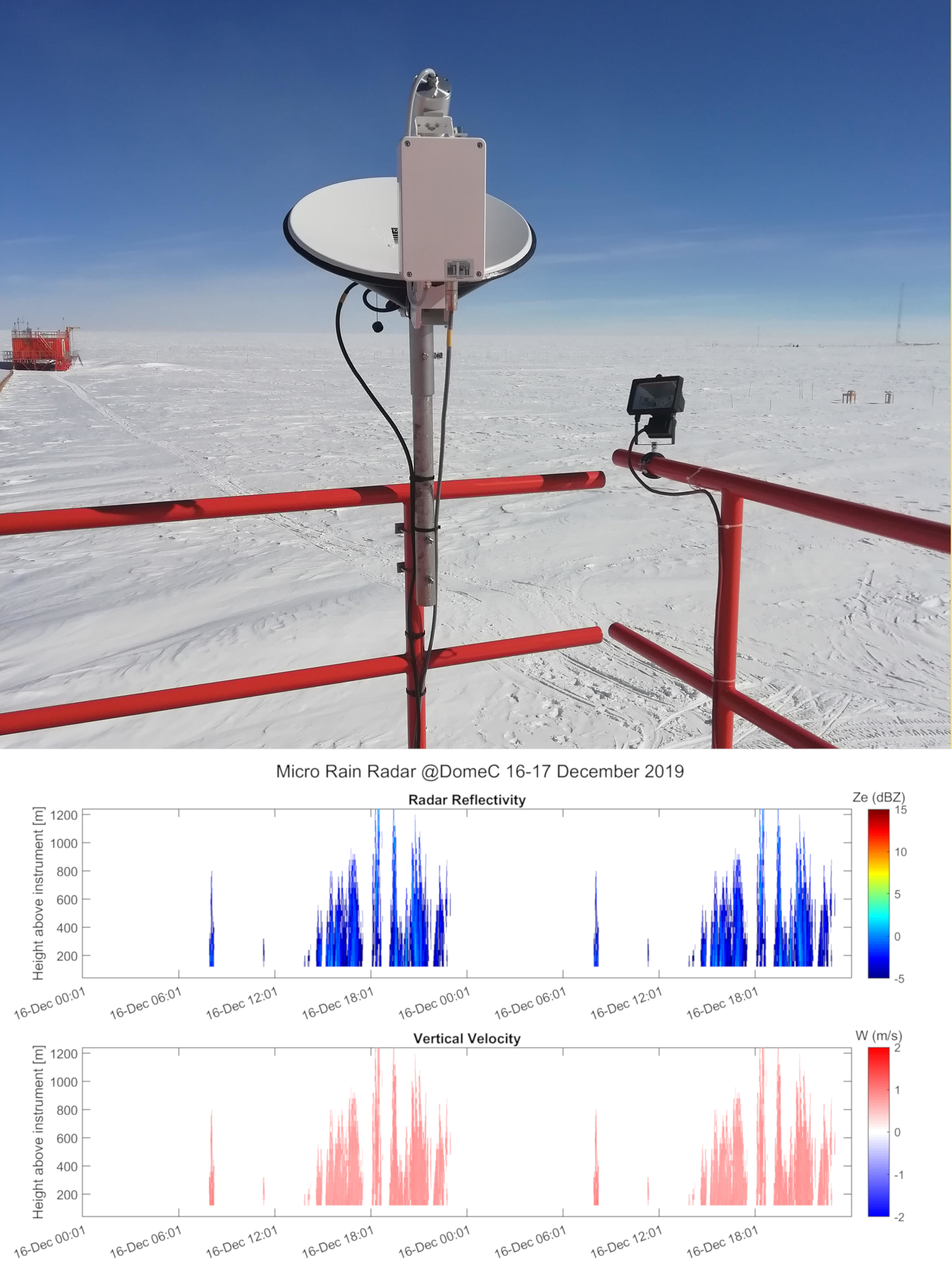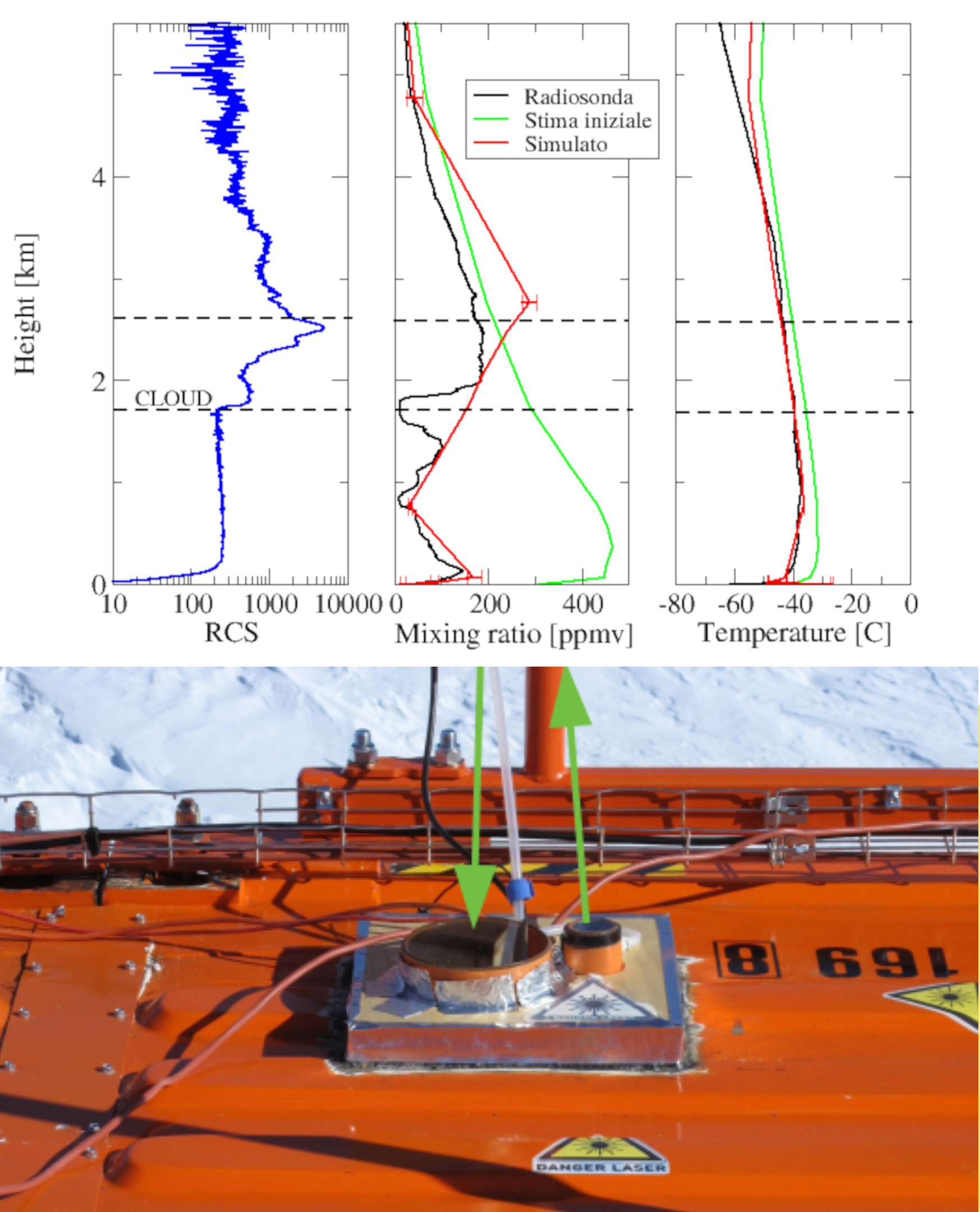CNR - INO
Type of resources
Topics
INSPIRE themes
Keywords
Contact for the resource
Provided by
Years
Formats
Representation types
status
Scale
-

The main goal of the project is the identification of well-characterized case studies aimed at a radiative self-consistency experiment of ice clouds and in mixed phase on the Antarctic Plateau, as well as the improvement of current spectral patterns in the far-infrared region. This can be achieved through the synergistic use of various measurement instruments operating in different bands of the electromagnetic spectrum and installed at the Concordia base, particularly at the Physics shelter. The infrared radiation emitted by the atmosphere and clouds is measured by the Fourier transform spectroradiometer REFIR-PAD (Radiation Explorer in Far Infrared - Prototype for Applications and Development) operating at Concordia since 2012 inside the DoCTOR PNRA project by Dr. Giovanni Bianchini (https://www.pnra.aq/it/project/330/dome-c-tropospheric-observer-osservatorio-troposferico-dome-c). The position and phase of clouds is estimated by the backscattering and depolarization LIDAR active since 2008. The particle size distribution can be estimated by an ICE- CAMERA, i.e., a kind of optical scanner that collects precipitating ice crystals on the shelter roof. As of the 2018-2019 campaign, a 24 GHz weather radar (Micro Rain Radar, MMR) operating continuously has been installed on the roof of Physics, which can provide an estimate of the precipitation rate of ice crystals and the falling velocities of those crystals. From these measurements, efforts are also being made to estimate the ice content in the case of precipitating ice clouds. Finally, during the last 2019-2020 campaign, a HALO-CAMERA was also installed, which can provide an estimate of the shape of ice crystals that can be used as a priori information in transfer models radiative suitable for simulating the effect of clouds. In order to complete the radiative closure (or self-consistency) experiment, the idea is to use the values of the parameters of the precipitating ice clouds, i.e., optical thickness and effective diameter, obtained from the inversion of the spectra produced by REFIR-PAD, to characterize the size distribution of the ice crystals and use the latter to calculate the reflectivity at the MRR radar wavelength, i.e., 24 GHz. The calculation of reflectivity obviously depends on the type of particles (habit) that are assumed, so the inversion procedure of the spectra produced by REFIR-PAD is repeated assuming different types of particles, thus using different optical property databases depending on whether aggregates, bullet rosettes, hexagonal columns, platelets or hollow columns are used. Consequently, the same habit assumptions will have to be made for the calculation of radar reflectivity. The reflectivity obtained can at this point be compared with the experimental reflectivity measured by MRR. Data analysis was carried out by Dr. Alessandro Bracci of ISAC-CNR and Giacomo Roversi of Ca' Foscari University of Venice, both belonging to the group led by Dr. Luca Baldini. Unfortunately, the very small size of the crystals at Concordia, due to the extremely low temperatures and very low humidity values, make it difficult to detect many of these crystals. For this reason, an initial work involved precisely the selection of optimal cases that could be analyzed. The work appears to be still in progress although positive results have already been obtained from the retrieval products of REFIR-PAD, which have allowed the estimation of the reflectivity at 24 GHz, which has been compared ,in the cases of best radar signal, with that measured by MRR obtaining a good agreement. The backscattering signal allows to derive the top and bottom elevations of the cloud to be fixed in the simulation of the radiative transfer. The depolarization signal makes it possible to discriminate the presence of ice, as water droplets do not produce depolarization signal. The lidar data, along with halo-camera and ice-camera data, are provided by Dr. Massimo Del Guasta.
-

The DoCTOr (Dome C Tropospheric Observer) project aims to establish an integrated monitoring system to measure simultaneously, continuously and with a high temporal resolution the water vapor and temperature vertical profiles and the radiative exchanges vs. altitude. The monitoring will enable us to detect both long-term trends and fast-evolving phenomena, the latter useful in the interpretation of the causes of the first. This task is performed mainly through remote sensing techniques, allowing for the study of a highly unperturbed atmospheric sample. The integration of all the deployed instrumentation in a single acquisition system simplifies greatly the data analysis needed to retrieve the final products: The REFIR-PAD spectroradiometer (already operating in dome C since 2011) will provide spectrally-resolved atmospheric downwelling radiances in the mid to far-infrared spectral range, while a laser diode based profiler will characterize the microphysics state of the first 3 km of the atmosphere.A real-time data analysis system based on an atmospheric radiative transfer model will then retrieve from the acquired data the temperature and water vapor profiles and the cloud optical thickness in almost all weather conditions found at Dome C, with a temporal resolution of about 10 minutes.
-

Pictures of the ice camera and the halo camera positioned at Concordia Station (Dome C, Antarctica). Data are available on the INO-CNR server on request to Dr. Massimo Del Guasta. The main objective of the FIRCLOUDS project is a complete spectral characterization of cirrus and mixed phase clouds in order to evaluate the radiative models in the FIR regime, where the clouds effect is very strong, and systematic spectral measurements are scarcely available. The ice and halo imager cameras enable an assessment of the cloud ice crystals micro-physics.
-

Vertical profiles along the first three kilometres of atmosphere above the ground (from 300 to 3000 m a.g.l.) of equivalent radar reflectivity factor (Ze), Doppler velocity (W) and Doppler spectral width (Sw) from a 24-GHz vertically pointing Micro Rain Radar MRR-2 by METEK GmbH positioned at Concordia Station (Dome C, Antarctica). The main objective of the FIRCLOUDS project is a complete spectral characterization of cirrus and mixed phase clouds in order to evaluate the radiative models in the FIR regime, where the clouds effect is very strong, and systematic spectral measurements are scarcely available. The micro rain radar (MRR) data allows the determination of the clouds reflectivity and the vertical velocity of ice crystals in the cases of precipitating clouds.
-

Backscattering and depolarization data from a LIDAR positioned at Concordia Station (Dome C, Antarctica). Data are available on the INO-CNR server on request to Dr. Massimo Del Guasta. The main objective of the FIRCLOUDS projectis a complete spectral characterization of cirrus and mixed phase clouds in order to evaluate the radiative models in the FIR regime, where the clouds effect is very strong, and systematic spectral measurements are scarcely available. A backscattering/depolarization lidar contributes to the estimation of the clouds position and phase, and of the optical extinction profile.